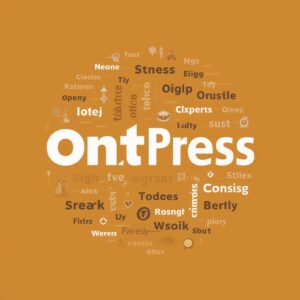
UAB Smart Square: A Comprehensive Guide
Contents
- 1 Introduction
- 2 What is UAB Smart Square?
- 3 The Importance of Workforce Management in Healthcare
- 4 Predictive Analytics in UAB Smart Square
- 5 Implementing UAB Smart Square in Your Organization
- 6 Case Studies: Success Stories with UAB Smart Square
- 7 Challenges and Solutions in Workforce Management
- 8 Future Trends in Workforce Management
- 9 FAQs
- 10 Conclusion
Introduction
In today’s fast-paced healthcare environment, efficient staffing and resource management are critical for success. UAB Smart Square is an advanced tool designed to meet these needs by providing a comprehensive solution for workforce management.
In this article, we will delve into the various features and benefits of UAB Smart Square, explain its impact on healthcare staffing, and explore how it utilizes predictive analytics to optimize workforce planning.
What is UAB Smart Square?
UAB Smart Square is a sophisticated workforce management solution specifically designed for the healthcare industry. It combines advanced scheduling, staffing, and analytics capabilities to help healthcare organizations optimize their workforce. By leveraging predictive analytics and real-time data, UAB Smart Square enables healthcare providers to make informed decisions, streamline operations, and improve patient care.
Key Features of UAB Smart Square
- Advanced Scheduling: UAB Smart Square offers a robust scheduling platform that allows managers to create and manage staff schedules with ease. The system considers various factors such as employee availability, skill sets, and patient needs to ensure optimal staffing levels.
- Predictive Analytics: One of the standout features of UAB Smart Square is its predictive analytics capabilities. By analyzing historical data and identifying trends, the system can forecast staffing requirements and help managers make data-driven decisions.
- Real-Time Data: UAB Smart Square provides real-time data on staffing levels, patient acuity, and other critical metrics. This allows managers to respond quickly to changing conditions and ensure that resources are allocated effectively.
- Employee Self-Service: The platform includes a self-service portal where employees can view their schedules, request time off, and manage their availability. This reduces administrative burden and increases employee satisfaction.
- Compliance Management: UAB Smart Square helps healthcare organizations stay compliant with labor laws and regulations by tracking hours worked, overtime, and other important metrics.
The Importance of Workforce Management in Healthcare
Effective workforce management is crucial in the healthcare sector for several reasons. First, it ensures that there are enough staff members to provide high-quality patient care. Second, it helps control labor costs, which is often one of the largest expenses for healthcare organizations. Third, it can improve employee satisfaction by creating fair and manageable schedules. UAB Smart Square addresses these needs by providing a comprehensive solution that streamlines workforce management processes.
Improving Patient Care
By ensuring that the right number of staff members with the appropriate skills are available at all times, UAB Smart Square helps healthcare organizations deliver better patient care. This can lead to improved patient outcomes, higher patient satisfaction, and a stronger reputation for the healthcare provider.
Reducing Labor Costs
UAB Smart Square helps healthcare organizations control labor costs by optimizing staffing levels and reducing the need for overtime. The predictive analytics capabilities of the system allow managers to forecast staffing needs accurately, reducing the likelihood of overstaffing or understaffing.
Enhancing Employee Satisfaction
Creating fair and manageable schedules is critical for employee satisfaction. UAB Smart Square’s advanced scheduling and self-service features allow employees to have more control over their schedules, leading to increased job satisfaction and reduced turnover.
Predictive Analytics in UAB Smart Square
Predictive analytics is a key component of UAB Smart Square, enabling healthcare organizations to make informed decisions based on data. By analyzing historical data and identifying trends, the system can forecast staffing requirements and help managers plan for future needs.
Forecasting Staffing Requirements
One of the primary uses of predictive analytics in UAB Smart Square is forecasting staffing requirements. The system analyzes historical data on patient volume, staff availability, and other factors to predict future staffing needs. This allows managers to create more accurate schedules and ensure that there are enough staff members to meet patient demand.
Identifying Trends
Predictive analytics also helps healthcare organizations identify trends that can impact staffing. For example, the system can analyze data on patient acuity levels, seasonal variations in patient volume, and other factors to identify patterns and trends. This information can be used to make proactive staffing decisions and improve overall workforce management.
Data-Driven Decision Making
By providing insights based on data, UAB Smart Square enables healthcare organizations to make more informed decisions. This can lead to improved efficiency, better patient care, and reduced labor costs. The system’s predictive analytics capabilities allow managers to plan for future staffing needs and respond quickly to changing conditions.
Implementing UAB Smart Square in Your Organization
Implementing UAB Smart Square in your healthcare organization can be a straightforward process with the right planning and support. Here are some steps to help you get started:
Assess Your Needs
Before implementing UAB Smart Square, it’s important to assess your organization’s needs and determine how the system can best meet those needs. Consider factors such as your current staffing processes, the size of your organization, and your goals for workforce management.
Get Buy-In from Stakeholders
Successful implementation of UAB Smart Square requires buy-in from key stakeholders, including managers, staff, and IT personnel. Make sure to communicate the benefits of the system and how it can improve efficiency and patient care.
Plan the Implementation
Develop a detailed implementation plan that includes timelines, milestones, and responsibilities. This plan should outline the steps needed to configure the system, train staff, and integrate UAB Smart Square with your existing systems.
Train Your Staff
Proper training is essential for the successful implementation of UAB Smart Square. Make sure that all staff members who will be using the system receive comprehensive training on its features and functionality. This will help ensure a smooth transition and maximize the benefits of the system.
Monitor and Optimize
After implementing UAB Smart Square, it’s important to monitor its performance and make any necessary adjustments. Regularly review staffing data, employee feedback, and other metrics to ensure that the system is meeting your organization’s needs. Make any necessary changes to optimize the system and improve its effectiveness.
Case Studies: Success Stories with UAB Smart Square
Hospital A: Improved Patient Care and Reduced Labor Costs
Hospital A implemented UAB Smart Square to address challenges with staffing and labor costs. By using the system’s predictive analytics capabilities, the hospital was able to forecast staffing needs more accurately and create more efficient schedules. This led to improved patient care, reduced overtime, and significant cost savings.
Clinic B: Enhanced Employee Satisfaction and Retention
Clinic B was struggling with high employee turnover due to dissatisfaction with scheduling practices. After implementing UAB Smart Square, the clinic was able to create more fair and manageable schedules, leading to increased employee satisfaction and reduced turnover. The self-service portal also empowered employees to manage their schedules, further enhancing job satisfaction.
Healthcare System C: Streamlined Operations and Compliance
Healthcare System C faced challenges with compliance and administrative burden related to staffing. By implementing UAB Smart Square, the organization was able to streamline its staffing processes, reduce administrative workload, and ensure compliance with labor laws and regulations. The system’s real-time data and analytics capabilities also allowed for more effective decision-making and resource allocation.
Challenges and Solutions in Workforce Management
While UAB Smart Square offers many benefits, healthcare organizations may still face challenges in workforce management. Here are some common challenges and how UAB Smart Square can help address them:
Challenge: Balancing Staff Levels with Patient Needs
Maintaining the right balance between staff levels and patient needs can be challenging, especially in a dynamic healthcare environment. UAB Smart Square’s predictive analytics capabilities can help by forecasting staffing requirements based on historical data and trends. This allows managers to create more accurate schedules and ensure that there are enough staff members to meet patient demand.
Challenge: Reducing Labor Costs
Labor costs are a significant expense for healthcare organizations, and controlling these costs can be challenging. UAB Smart Square helps by optimizing staffing levels and reducing the need for overtime. The system’s analytics capabilities allow managers to make data-driven decisions that can lead to cost savings.
Challenge: Ensuring Compliance
Compliance with labor laws and regulations is critical for healthcare organizations, but it can be difficult to manage. UAB Smart Square helps by tracking hours worked, overtime, and other important metrics to ensure compliance. The system’s reporting capabilities also make it easier to provide documentation for audits and regulatory reviews.
Challenge: Enhancing Employee Satisfaction
Creating fair and manageable schedules is essential for employee satisfaction, but it can be difficult to achieve. UAB Smart Square’s advanced scheduling and self-service features allow employees to have more control over their schedules, leading to increased job satisfaction and reduced turnover.
Future Trends in Workforce Management
The field of workforce management is constantly evolving, and new trends are emerging that can impact healthcare organizations. Here are some future trends to watch:
Increased Use of Artificial Intelligence
Artificial intelligence (AI) is becoming more prevalent in workforce management, with applications ranging from predictive analytics to automated scheduling. AI can help healthcare organizations make more accurate staffing decisions and optimize resource allocation.
Greater Focus on Employee Well-Being
Employee well-being is becoming a greater focus for healthcare organizations, and workforce management systems are evolving to address this need. Features such as flexible scheduling, self-service portals, and wellness programs can help improve employee satisfaction and retention.
Integration with Other Systems
Workforce management systems are increasingly being integrated with other systems, such as electronic health records (EHRs) and financial management systems. This integration can provide a more comprehensive view of operations and improve decision-making.
FAQs
What is UAB Smart Square?
UAB Smart Square is a comprehensive workforce management solution designed for the healthcare industry. It combines advanced scheduling, predictive analytics, and real-time data to help healthcare organizations optimize their staffing processes.
How does UAB Smart Square improve patient care?
UAB Smart Square improves patient care by ensuring that the right number of staff members with the appropriate skills are available at all times. This leads to better patient outcomes, higher patient satisfaction, and a stronger reputation for the healthcare provider.
Can UAB Smart Square help reduce labor costs?
Yes, UAB Smart Square helps reduce labor costs by optimizing staffing levels and reducing the need for overtime. The system’s predictive analytics capabilities allow managers to forecast staffing needs accurately, leading to cost savings.
How does UAB Smart Square enhance employee satisfaction?
UAB Smart Square enhances employee satisfaction by creating fair and manageable schedules and providing a self-service portal where employees can manage their availability and request time off. This leads to increased job satisfaction and reduced turnover.
What are the key features of UAB Smart Square?
Key features of UAB Smart Square include advanced scheduling, predictive analytics, real-time data, employee self-service, and compliance management. These features help healthcare organizations optimize their workforce management processes and improve efficiency.
Conclusion
UAB Smart Square is a powerful tool that can help healthcare organizations optimize their workforce management processes. By leveraging advanced scheduling, predictive analytics, and real-time data, UAB Smart Square enables healthcare providers to make informed decisions, improve patient care, and reduce labor costs.
Implementing UAB Smart Square can lead to significant benefits, including enhanced employee satisfaction, improved compliance, and streamlined operations. As workforce management continues to evolve, UAB Smart Square is well-positioned to help healthcare organizations meet their staffing needs and achieve their goals.












































Post Comment